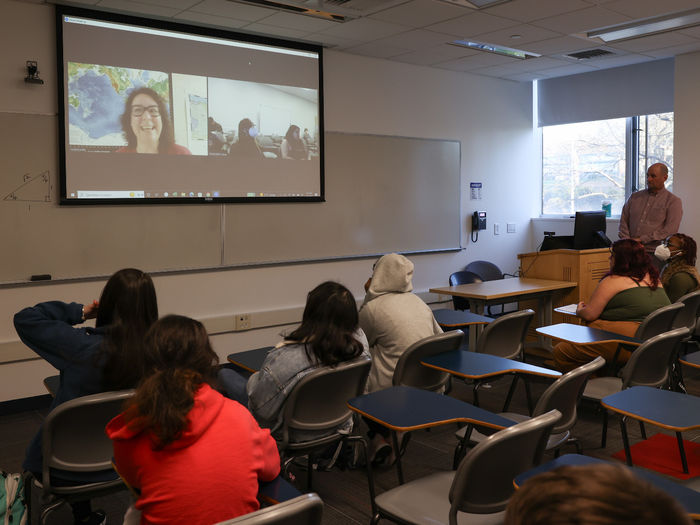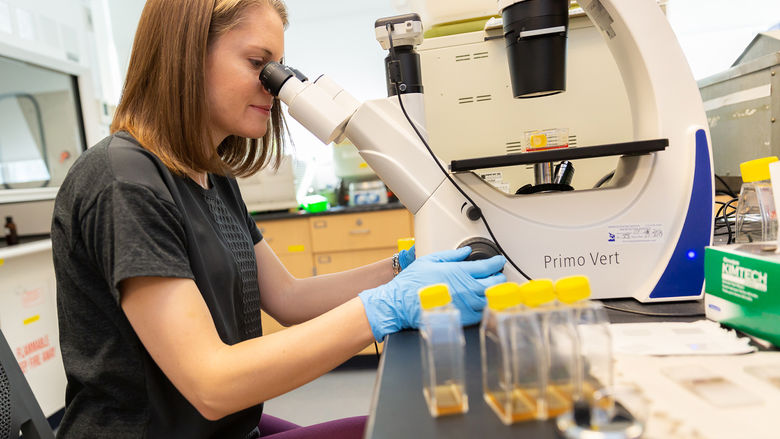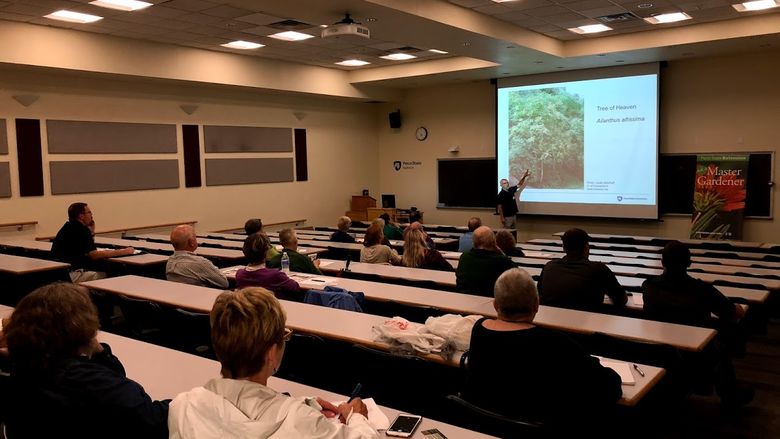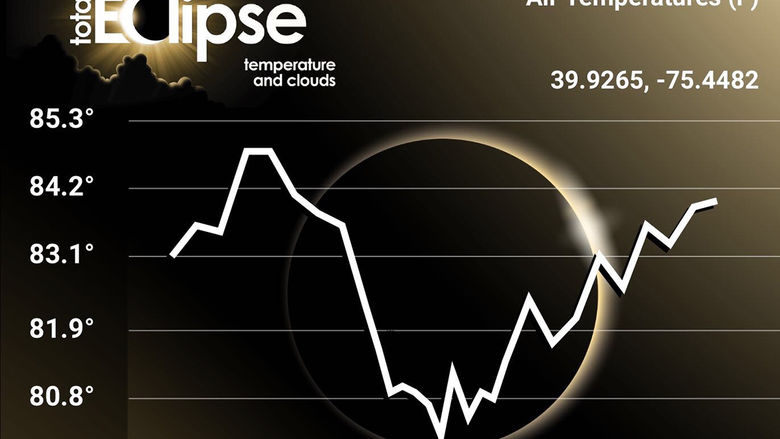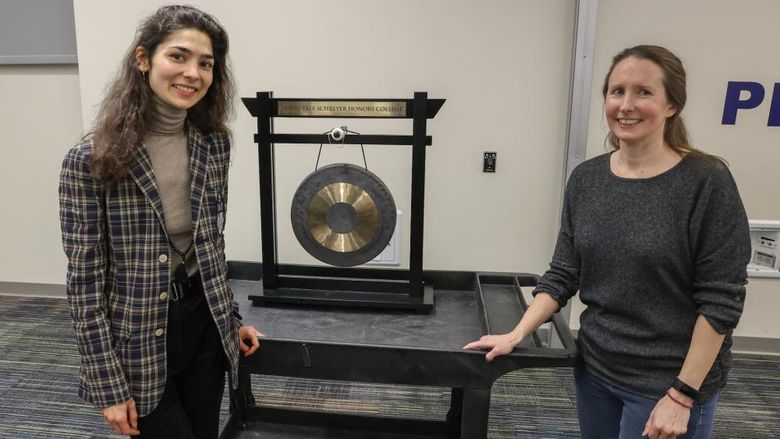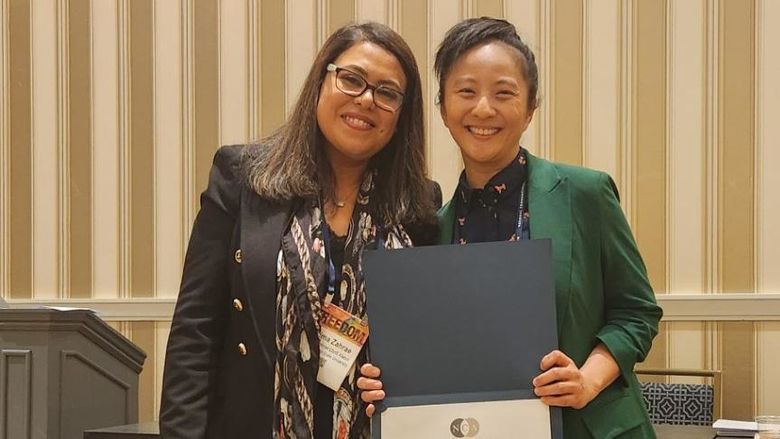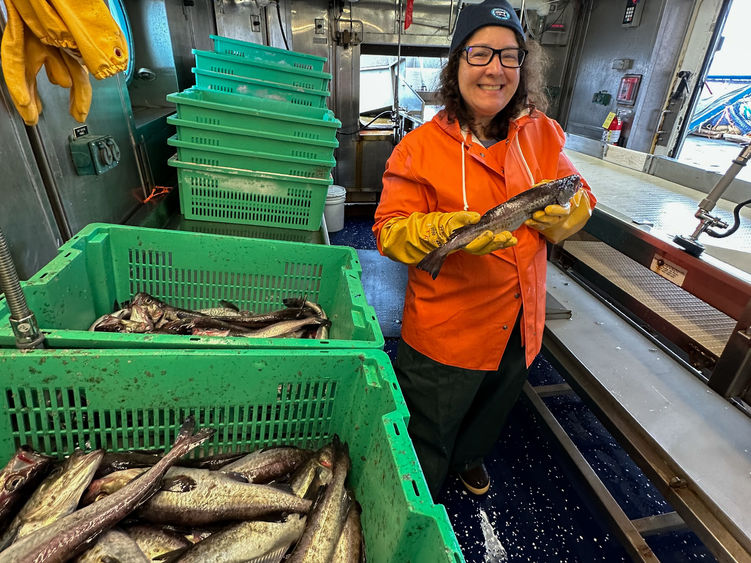
Laura Guertin, distinguished professor of Earth science at Penn State Brandywine, spent two weeks in June aboard a research ship in the Gulf of Alaska assessing the walleye pollock population.
MEDIA, Pa. — Laura Guertin, distinguished professor of Earth science at Penn State Brandywine, celebrated National Ocean Month in June in a most appropriate way — she spent two weeks aboard a research vessel in the Gulf of Alaska. Guertin joined the expedition through the National Oceanic and Atmospheric Administration (NOAA) Teacher at Sea program.
The Teacher at Sea program provides teachers with the opportunity to gain first-hand experience participating in science at sea. The goal is for educators to enrich their curricula with the depth of understanding they gain by working alongside scientists studying the marine environment. This was Guertin’s second voyage through the program, which she said gave her a chance to bridge science and education through a real-world research experience. Through her time on the ship, Guertin gained experience she could share in the classroom and the community.
The NOAA ship Oscar Dyson’s mission was to assess the population and distribution of walleye pollock in the Gulf of Alaska, collecting data to determine catch allocation and maintain sustainable fisheries. Researchers gathered data through both acoustic surveying and using trawl nets to collect the fish and bring them on board for examination.
“I loved learning new things that I can then pass on and share with the students in my classes at Brandywine. That's really important because I can't take them to the Gulf of Alaska, but I can bring the Gulf of Alaska to them.”—Laura Guertin , Distinguished Professor of Earth Science
Guertin was on the ship June 10-22, departing from Kodiak, Alaska. Her daily 12-hour shifts (4 a.m.-4 p.m.) were spent in the fisheries lab, where the pollock were sorted, measured and weighed.
Guertin emphasized the importance of fieldwork both for her own professional development and to enhance what she shares with her students and community members as she presents about her time at sea.
“The highlight for me was just learning something new,” Guertin said. “I loved learning new things that I can then pass on and share with the students in my classes at Brandywine. That's really important because I can't take them to the Gulf of Alaska, but I can bring the Gulf of Alaska to them. I can talk from my photos and my experiences and really make it an authentic narrative about what's going on and this is the research NOAA's doing. For me, it's an amazing teaching experience to be able to bring that in.”
Guertin requested to join a fisheries expedition with NOAA as she teaches two different oceanography courses at Penn State Brandywine.
“In each course, we go over how biology, chemistry, physics and geology are all part of the ocean system and dynamics,” Guertin said. “Participating in a fisheries expedition has advanced my knowledge and what I can add to my classroom instruction. And I can’t think of a more important time for everyone to learn more about the science and sustainable management of marine life and their habitats.”
Guertin said learning about fish anatomy was a different experience, as her training is in geology.
“I work with rocks and sand, things that don’t bleed or breathe,” she said, explaining that just figuring out how to hold a live fish was a new skill she had to learn quickly.
She added that she also enjoyed meeting people from across the country.
“Everyone's got a different story," Guertin said. "It's really a group and a community that comes together and supports each other. You really are working as a team and it is so supportive and so collaborative. That's something I have always seen on ships, which is wonderful.”
And this was no cruise ship, Guertin noted. In addition to the long shifts of hard work, sailing in the Gulf of Alaska included high winds, rainstorms, cold temperatures and rough seas. But, she said, the experience is an important reminder of the process of science and how data are gathered. She shared firsthand accounts of her time on the Oscar Dyson through the Teach at Sea website.
The summer voyage was Guertin’s third sea-bound research experience since she joined Brandywine in 2001. In 2014, she was aboard the NOAA ship Thomas Jefferson for a hydrographic survey in the Atlantic Ocean.
In the spring of 2022, she spent two months on the research ship JOIDES Resolution, sailing out of Cape Town, South Africa, to the South Atlantic Ocean on a mission to study the ocean floor. The ship had the ability to drill through ocean sediments and ocean crusts and bring the core samples to the surface for study. Guertin’s role on that expedition was onboard outreach officer, which included managing the project’s social media, writing blog posts and conducting virtual tours and educational sessions live from the ship with classes and community groups. She also helped in the science laboratory, conducting initial assessments of the core material.
Last fall, she joined scientists from several other countries at the Gulf Coast Repository, located at Texas A&M University, where the core samples are stored and cut for analysis. While there, she conducted 19 online facility tours for classes and groups in the U.S. and two other countries.
Guertin has received honors for both her research and innovative methods for teaching science to undergraduate students. In 2022, Penn State named her a distinguished professor and the American Association for the Advancement of Science elected her as a fellow.

